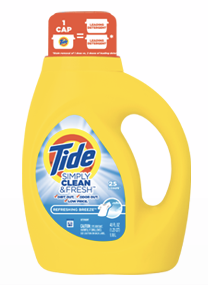
For Procter & Gamble (PG), manufacturer of Tide and Gain, and other detergent makers, the new machines have contributed to five years of declining detergent sales. Detergents account for 13 percent of P&G’s U.S. sales, down 2 percent year to date, says Javier Escalante, an analyst at Consumer Edge Research. Extra soap isn’t a problem for traditional washing machines; they use enough water to eliminate soapy residue. But in high-efficiency washers, in which laundry rotates in a drum and is sprayed with water and not continually submerged, more detergent means sudsier clothes. Efficient machines use as little as one-third of the water of older models.
Total U.S. detergent sales fell 6.4 percent from 2009 to 2013 and will slip an additional 5.9 percent through 2018, says John Owen, an analyst at market researcher Mintel Group. High-efficiency washers are not the only factor contributing to those declines. P&G and other makers have cut prices as consumers look to cheaper brands, such as Arm & Hammer and Oxi Clean from Church & Dwight (CHD), the second-largest detergent maker in the U.S. Companies also must contend with a rise in the use of large-capacity machines, which translates into fewer loads.
P&G added a lower-priced product, Tide Simply Clean & Fresh, earlier this year. A 40-ounce bottle, good for 25 loads, costs 24 percent less than a same-size bottle of Tide Original.










SouthernReverie says
Several months ago I read a similar article that stated that this is the reason they started producing the pre-measured detergent “pods.” That way, the consumer can’t reduce the amount used per load.